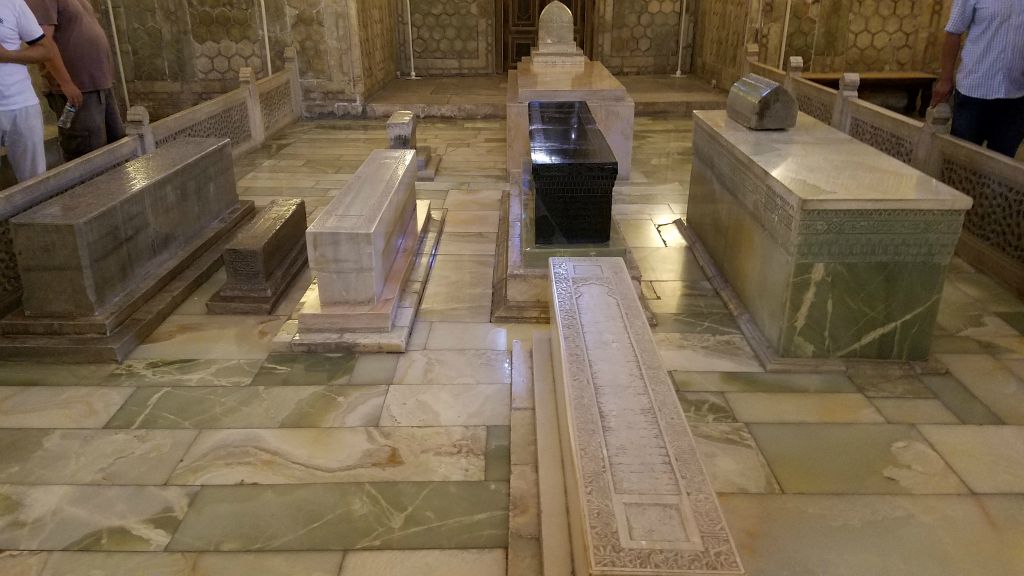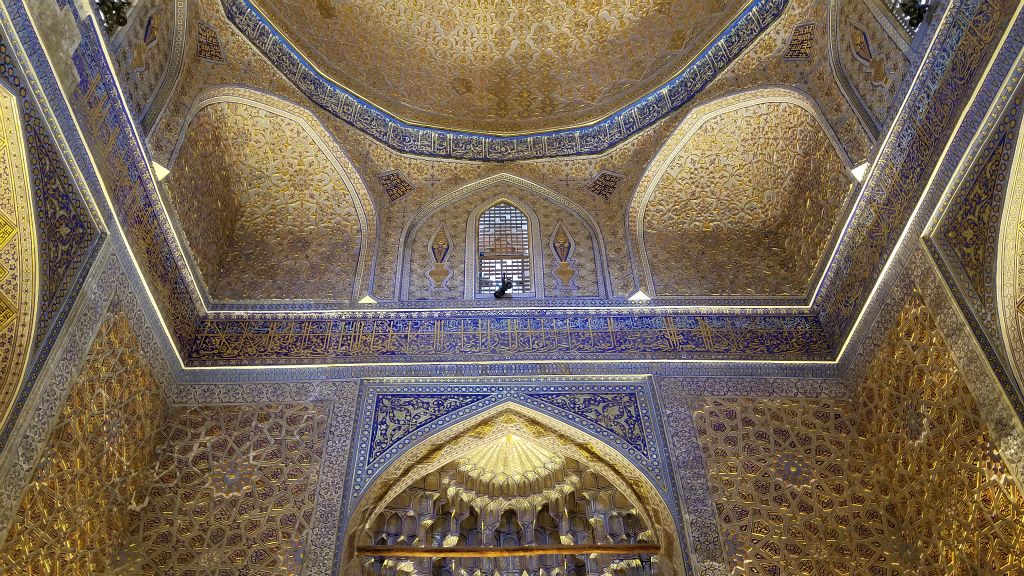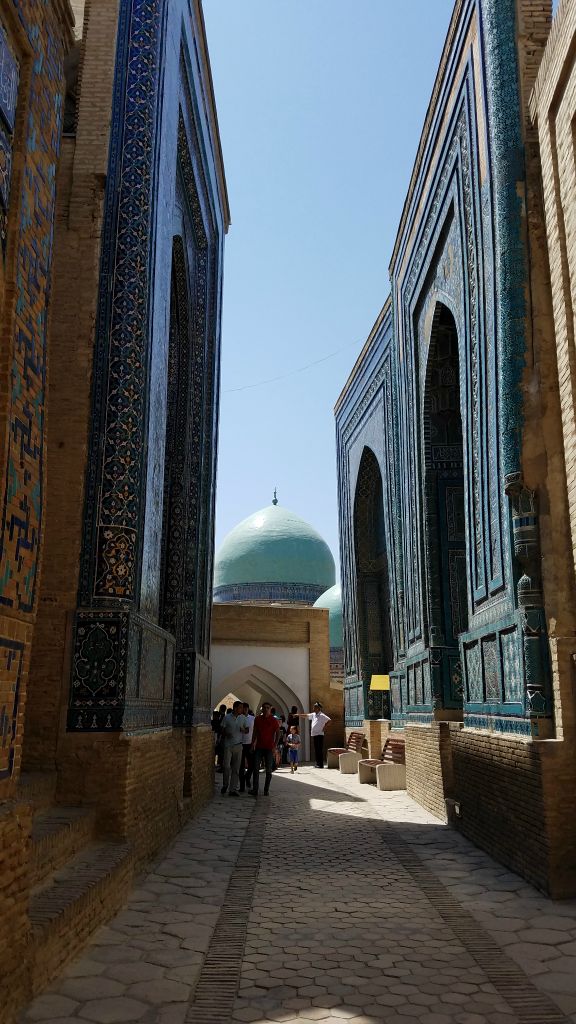A train ride took me from Bukhara to Samarkand – from the train station, a taxi ride to my hostel where my roommate was a jolly Aussie guy who spoke fluent Russian due to family heritage. (Was definitely great to be out and about with him as he chatted up the Russian-speaking elderly Uzbek taxi drivers.)
Madrasas, mosques, mausoleums, and mystique – Samarkand is full of them, and I spent several days checking them out. The most famous of them all is of course, the Registan. And while I mentioned that seeing these majolica mosaic-filled structures starting to get old, the Registan still commanded a level of awe due to its size and intricacy of its décor. To be fair though, this beauty was due to a lot of restoration – if one googles “old photos Registan”, one would see how decrepit they were up until the early 20th century. I suppose I was appreciating the restoration work done (humans are amazing when they apply themselves correctly) and the idea of what it was supposed to be more than anything.
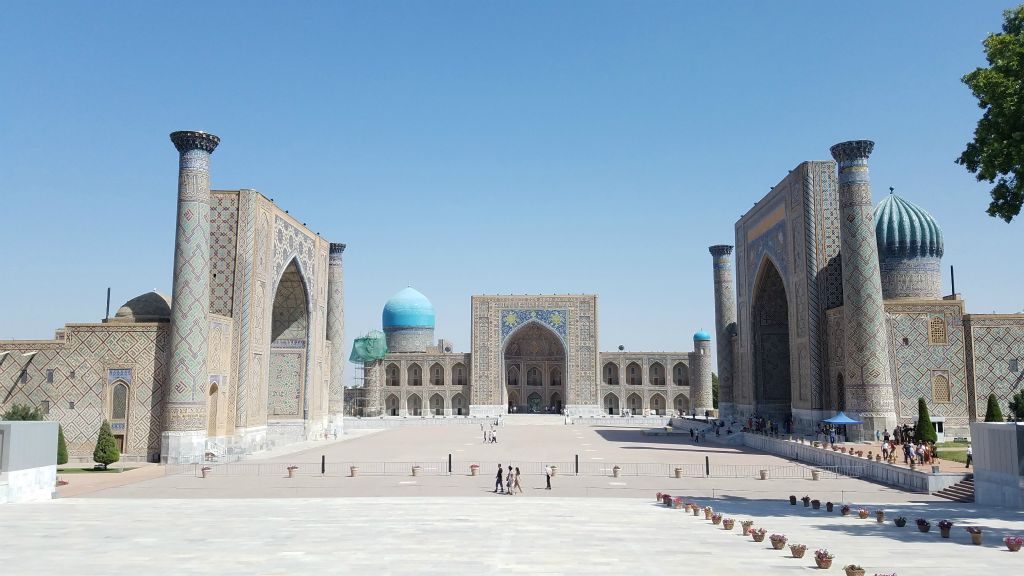
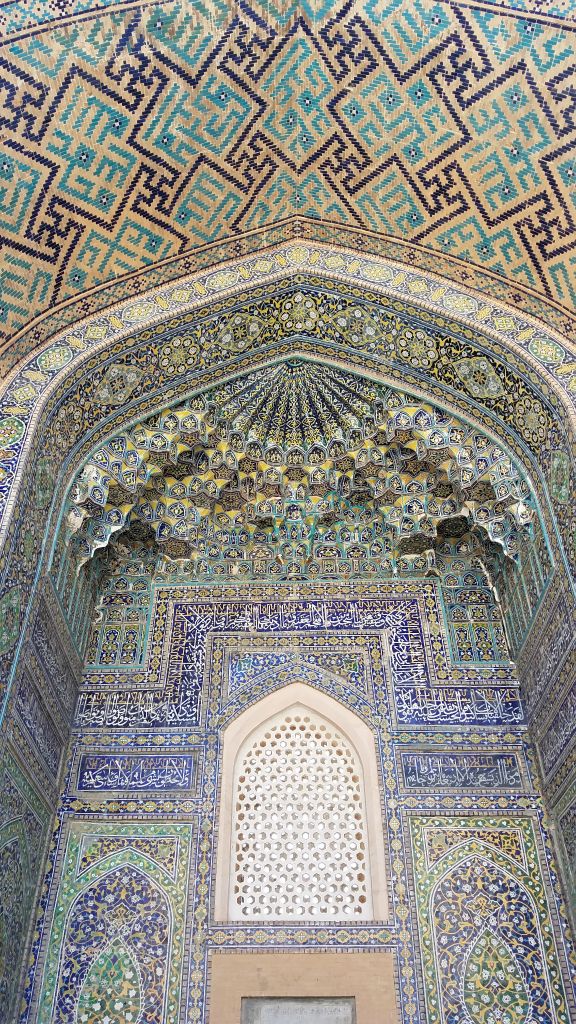
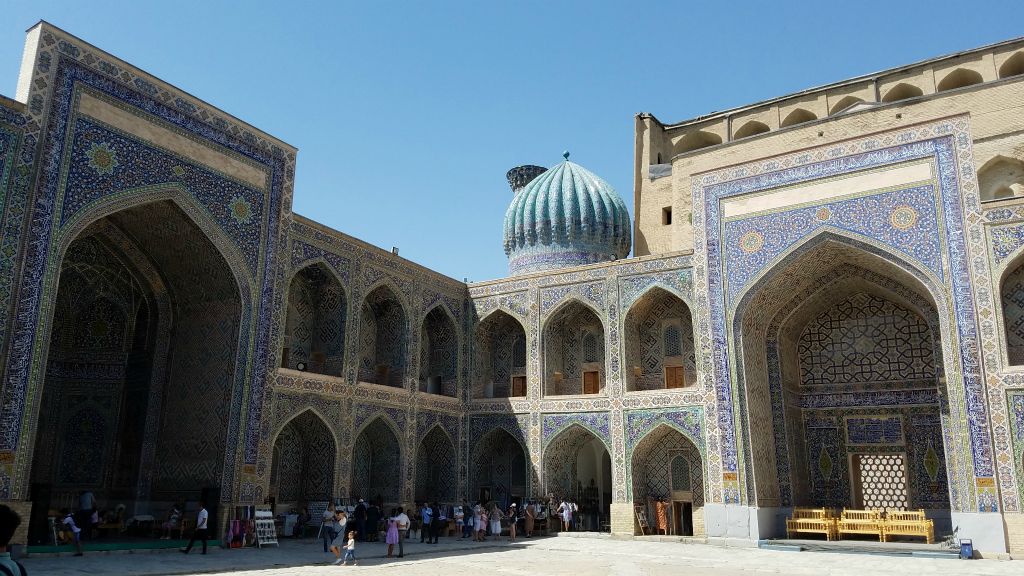

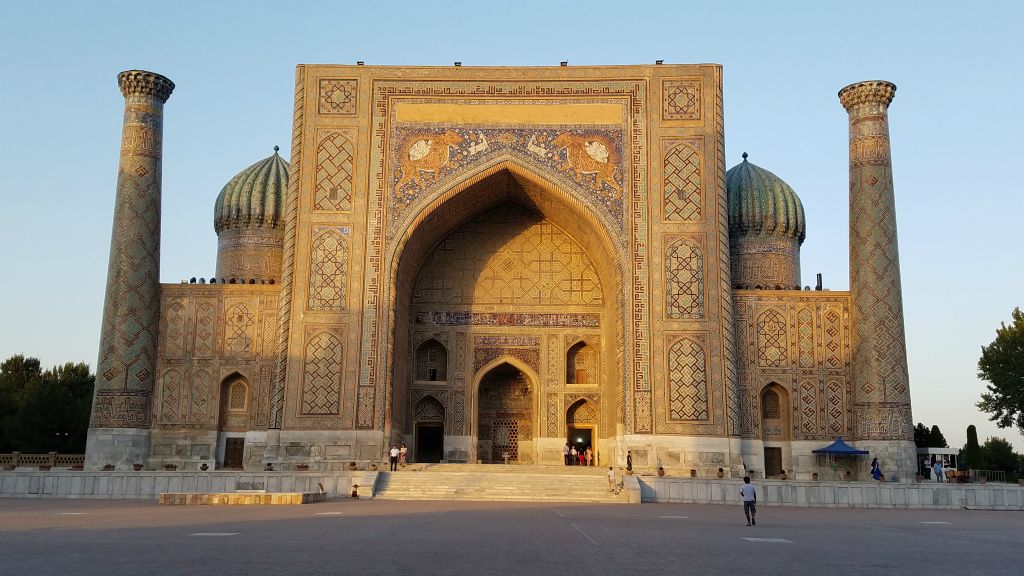
In these parts of the world, the name “Amir Timur” (or “Tamerlane”) is revered – basically Uzbekistan’s own fearsome version of Genghis Khan. He did his conqueror/ruler thing for a while and you see a lot of statues of him around – but I especially wanted to visit his final resting spot (as well as some other famous/infamous Uzbek rulers over the centuries) at Gur-E-Amir Mausoleum.
